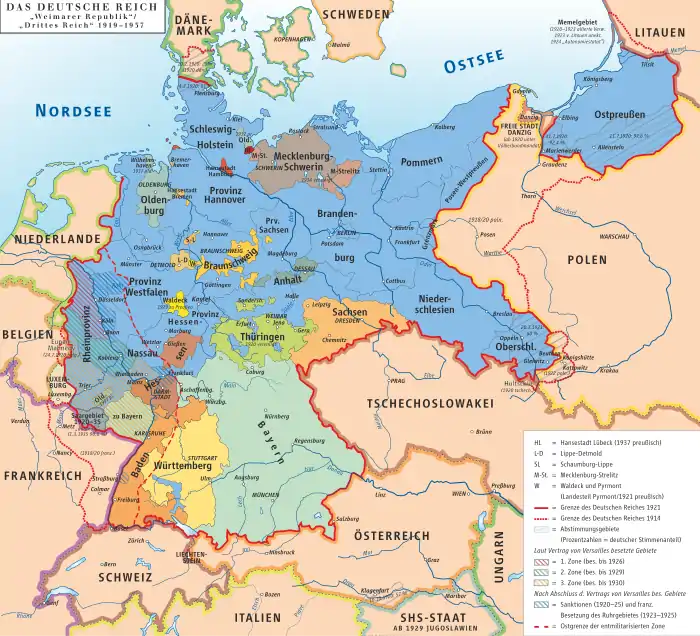Würzburg Soviet Republic
The Würzburg Soviet Republic was an unrecognised, short-lived state, existing for just 3 days in April 1919.[1] It consisted of the Bavarian district of Lower Franconia, Germany. The republic was established amid the German Revolution (after defeat of the German Empire in World War I).
Würzburg Soviet Republic | |||||||||||||
|---|---|---|---|---|---|---|---|---|---|---|---|---|---|
| 1919 | |||||||||||||
| Status | Unrecognized state | ||||||||||||
| Capital | Würzburg | ||||||||||||
| Common languages | German | ||||||||||||
| Government | Soviet republic | ||||||||||||
| People's Commissar/President | |||||||||||||
| Legislature | Soviet of People’s Representatives | ||||||||||||
| Historical era | World War I | ||||||||||||
• Established | 7 April 1919 | ||||||||||||
• Disestablished | 9 April | ||||||||||||
| Currency | "Papiermark" (ℳ) | ||||||||||||
| |||||||||||||
| Today part of | |||||||||||||
History
As early as the 3 November, at the very beginning of the November Revolution, the Social Democratic Party member of parliament (later Minister of State) and Würzburg resident Fritz Endres publicly demanded the introduction of the soviet republic. This demand was fulfilled on the 9 November after the monarchy was successfully overthrown in Munich on the night of November 8. Subsequently a workers and soldiers council was created in the city formed, mainly, by representatives of the SDP. Würzburg's city council and the government of Lower Franconia and Aschaffenburg bowed to the new conditions demanded by the council. As the economic situation in Würzburg deteriorated in early 1919, supporters of left-wing radicalism gained in influence. The soviet republic was quashed by the military under the II Royal Bavarian Corps.[2]
See also
References
- Allan, Mitchell (2015). Revolution in Bavaria, 1918-1919: The Eisner Regime and the Soviet Republic: The Eisner Regime and the Soviet Republic. Princeton University Press. p. 314. ISBN 9781400878802.
- "Council Republic of Baiern (1919)". Retrieved 2020-01-26.


